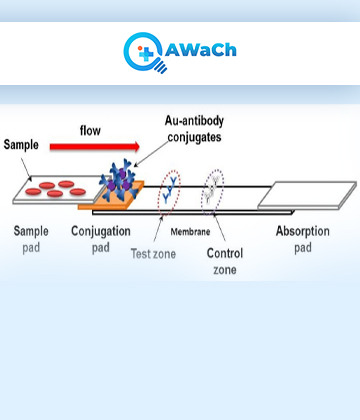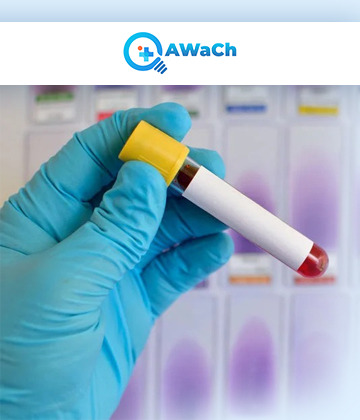Text
Urinary NGAL
Urinary NGAL (Neutrophil Gelatinase-Associated Lipocalin) refers to the measurement of NGAL levels in urine.
Healthcare professionals measure urinary NGAL levels using immunoassay techniques to detect and monitor kidney injury using NGAL. NGAL, a protein, is produced and released by various cells, including neutrophils (a type of white blood cell) and epithelial cells of the kidneys. NGAL serves as an early marking of kidney injury or insult, playing a role in the assessment and early detection diagnosis of acute kidney injury (AKI).When the kidneys are injured or under stress, NGAL levels increase rapidly in both blood and urine. Urinary NGAL Laboratory tests can measure levels to detecting and monitoring kidney injury. This will be especially valuable for early identification of. AKI, allowing for timely intervention and management.

0 notes
Text
Thyroid Function Test
Thyroid function tests (TFTs) are a group of blood tests that assess the functioning of the thyroid gland.
The thyroid gland, located in the neck, produces hormones that play a crucial role in regulating various bodily functions, including metabolism, growth, and development. Common thyroid function tests include, Thyroid-Stimulating Hormone (TSH) Test, Thyroxine (T4) Test, Free Thyroxine (Free T4) Test, Triiodothyronine (T3) Test and Thyroid Antibody Tests.
Thyroid function tests helping diagnose thyroid disorders, monitor thyroid function during treatment, and guiding medication adjustments. Interpreting the results relies on the laboratory's reference ranges and specific hormone levels. Consulting a healthcare professional becomes essential to assess the results within the context of a person's symptoms, medical history, and physical examination.

0 notes
Text
Quantitative Lateral Flow Assay
A quantitative lateral flow assay (LFA) is a type of in vitro diagnosis that combines the simplicity and rapidity of lateral flow assay technology with the ability to provide quantitative results, either by using a portable reader or a smartphone.
Lateral flow assays are commonly used for point-of-care testing, as they are easy to use, portable, and do not require specialized laboratory equipment.Traditional lateral flow assays, like pregnancy tests, yield qualitative results that usually indicate the presence or absence of a target analyte. In contrast, quantitative lateral flow assays strive to gauge the concentration or quantity of a particular analyte within a sample. In numerous medical conditions, comprehending the analyte or biomarker's concentration holds importance beyond a binary yes or no outcome.

https://qawachbio.com/quantitative-lateral-flow-assay/
0 notes
Text
Neutrophil gelatinase-associated Lipocalin
It is a protein that is primarily expressed in neutrophils, a type of white blood cell, as well as other cells such as kidney tubular cells.
Neutrophil gelatinase-associated lipocalin (NGAL) is a protein that is primarily expressed in neutrophils, a type of white blood cell, as well as other cells such as kidney tubular cells. NGAL is involved in various physiological and pathological processes, particularly in the context of inflammation, infection, and kidney injury. NGAL is a member of the lipocalin protein family, which are small extracellular proteins that bind and transport small hydrophobic molecules. It can bind to a variety of ligands, including iron-containing siderophores, bacterial lipopolysaccharides, and certain matrix metalloproteinases (MMPs). This binding activity contributes to the role of NGAL in modulating the immune response and tissue remodelling.

0 notes
Text
Lateral Flow Assay Uncut Sheets
Lateral Flow Assay Uncut Sheets uncut sheets are specialized materials.
They consist of a large sheet or roll of the various components that make up a lateral flow , including the nitrocellulose membrane, sample pad, conjugate pad, absorbent pad, and backing card.
The uncut sheets serve as a precursor to the individual lateral flows test strips that are commonly seen in in vitro diagnostic kits.Firstly Manufacturers typically purchase these uncut sheets and then customize them according to their specific test requirements, including the target analyte, detection method, and desired performance characteristics. Secondly The uncut sheets allow for flexibility in the manufacturing process, as they can be customized to produce lateral flow test strips with different configurations and specifications.
Thirdly Manufacturers can cut the sheets into smaller strips of specific dimensions, apply additional coatings or reagents, and assemble them into the final test format.

0 notes
Text
Lateral Flow Assay
A lateral flow assay (LFA), also known as a lateral flow test or rapid diagnostic tests (RDTs), is a simple and rapid diagnostic tool used to detect the presence or absence of a specific substance or analyte in a sample.
LFAs are commonly used in medical diagnostics, food safety testing, environmental monitoring, and other fields. In case of medical diagnostic tests based out of lateral flow assay, a specific biomarker or a protein is biochemically interacted with its counter-molecule like antibodies to help aid detection. The basic principle of a lateral flow assay involves the capillary action of fluids through a strip of nitrocellulose membrane, which contains specific components to facilitate the detection of the target analyte. The test strip typically consists of the major components like, Sample Pad, Conjugate Pad, Nitrocellulose Membrane, Absorbent Pad and a Backing Laminate on which all components of a LFA are assembled. LFA based test can detect a single analyte or could detect more than one analyte thus making a multiplex LFAs.

0 notes
Text
Kidney Function Test
Healthcare professionals use kidney function tests as diagnostic tools to evaluate the health and functioning of the kidneys.
These tests offer crucial insights into the kidneys' performance, facilitating the detection of abnormalities and aiding in the diagnosis and monitoring of kidney diseases or injuries. including chronic kidney disease (CKD) and acute kidney injury (AKI). Commonly used kidney function tests are: Blood Urea Nitrogen (BUN) Test, Serum Creatinine Test, Glomerular Filtration Rate (GFR) Calculation, Urinalysis involves analysing a urine sample for presence of abnormal levels of protein, blood cells, glucose, or bacteria, Albumin-to-Creatinine Ratio (ACR) and Imaging Tests like ultrasound, CT scan, or MRI. It is important to note that these tests are typically used in combination to provide a comprehensive assessment of kidney function.Healthcare professionals, typically nephrologists, interpret these tests by considering the results within the framework of an individual's medical history, symptoms, and other factors.

0 notes
Text
IVD Testing
IVD testing refers to In Vitro Diagnostics testing, which involves the examination of samples taken from the human body outside of it, typically in a laboratory setting.
In vitro diagnostics refers to In Vitro Diagnostics testing, which involves the examination of samples taken from the human body outside of it, however in a laboratory setting. These tests are designed to provide information about a person's health or the presence of a specific disease or condition.
In this paragraph IVD tests play a crucial role in diagnosing diseases, monitoring treatment progress, and screening for various health conditions. IVD testing covers an extensive array of medical tests, including LFA-based testing, Clinical Chemistry Tests, Microbiology Tests, Hematology Tests, Molecular Diagnostics, Histopathology Tests, and other Point-of-Care Testing (POCT).
This testing plays a crucial role in guiding medical decisions and making medical interventions, enabling early disease detection, and monitoring treatment effectiveness.

0 notes
Text
InstaNGAL® Test kit
Rapid and Reliable Kidney Injury Assessment: Introducing the InstaNGAL® Test Kit
Rapid and Reliable Kidney Injury Assessment: Introducing the InstaNGAL® Test Kit
InstaNGAL®, developed by QAWaCh Bio Pvt. Ltd., is an innovative early detection test for acute kidney injury (AKI), based on estimation of urinary Neutrophil Gelatinase-associated Lipocalin (uNGAL) in human urine using a unique semi-quantitative and quantitative lateral flow assay platform. InstaNGAL® is a bed-side test that is intended for early diagnosis of AKI, based on levels of NGAL in human urine.
This novel test kit is based on QAWaCh Bio’s novel patented technology ‘Q-Plat’, that uses combination of a lateral flow assay-based test card and smartphone

0 notes
Text
In Vitro Ddiagnosis
(IVD) In Vitro Ddiagnosis refers to the process of performing diagnostic tests or examinations on samples of bodily fluids, tissues, or other specimens outside the human body, typically in a laboratory setting or at home or office (in case of self-tests).
These tests are crafted to identify and detect diseases, conditions, infections, or abnormalities within the body. In modern healthcare, IVD plays a pivotal role by providing healthcare professionals with vital insights into a patient's health status.It aids in preventing diseases, detecting them early, and formulating treatment strategies. Healthcare professionals frequently use these tests to screen, diagnose, and monitor a variety of medical conditions...
Various types of in vitro diagnostic tests are accessible, including: LFA-based testing, Clinical Chemistry Tests, Microbiology Tests, Hematology Tests, Molecular Diagnostics, Histopathology Tests and other Point-of-Care Testing (POCT).

0 notes
Text
CRP Test
CRP testing refers to the measurement of C-reactive protein (CRP) levels in the blood.
During these inflammatory conditions, C-reactive protein (CRP) levels can experience rapid and substantial increases, rendering it a valuable marker for evaluating and tracking various medical conditions.
Healthcare professionals commonly conduct C-reactive protein (CRP) testing using a blood sample.
There are different methods available for CRP measurement, including high-sensitivity CRP (hs-CRP) tests, which can detect even lower levels of CRP associated with cardiovascular risk.CRP testing is primarily used in the following ways:

0 notes
Text
Covid-19 Antigen Test
A COVID-19 antigen test, also recognized as a rapid antigen test or rapid antigen detection test (RADT), constitutes in vitro diagnosis used to detect the presence of viral antigens associated with the SARS-CoV-2 virus, which cause COVID-19 infection.
Healthcare providers commonly use antigen tests to screen and diagnose COVID-19, especially in situations requiring swift outcomes. The COVID-19 antigen test functions by detecting distinct proteins from the SARS-CoV-2 virus in respiratory samples, like nasal or throat swabs. These tests are recognized for their speedy results, often available in 15 to 30 minutes. Their value lies in swiftly pinpointing potentially infectious individuals, enabling prompt implementation of public health actions such as isolation and contact tracing.

0 notes
Text
Colloidal Gold
Colloidal gold refers to a suspension of gold nanoparticles in a liquid medium.
CD solutions contain gold nanoparticles that are exceptionally tiny, typically falling within the size range of 1 to 100 nanometers. These nanoparticles showcase distinctive optical characteristics, such as a distinct red, pink, or purple hue, attributed to the interaction between light and particles at the nanoscale. As a result, colloidal gold or gold nanoparticles find application in binding with detection molecules to provide visual cues in numerous diagnostic tests, thereby boasting extensive utility in diagnostic healthcare. Colloidal gold finds diverse applications across various fields.
1. Biomedical Research: CD nanoparticles are used in a wide range of biomedical applications, such as drug delivery systems, targeted therapy, and diagnostic assays. Their small size and surface properties allow for efficient cellular uptake and targeted delivery of therapeutic agents.CD

0 notes
Text
Chronic Kidney Disease
(CKD) Chronic kidney disease is a characterized by a gradual loss of kidney function over period of months or years.
The kidneys assume a critical role in filtering waste products and surplus fluids from the blood, however sustaining electrolyte equilibrium, and generating hormones that control blood pressure and stimulate red blood cell generation. As a result When the kidneys incur damage or operate inadequately, however the body can accumulate waste products and fluids, resulting in a range of complications..
Major Causes of Chronic Kidney Disease could be Diabetes, High Blood Pressure, Glomerulonephritis, Polycystic Kidney Disease (PKD) and Recurrent Kidney Infections. Certain medications, kidney stones, urinary tract blockages, and prolonged obstruction of the urinary tract can also contribute to CKD.

0 notes
Text
Acute Kidney Injury
Acute kidney injury (AKI), previously known as acute renal failure, represents a medical emergency and encompasses a wide range of damage to the kidneys
(AKI) Acute kidney injury (AKI) occurs when kidney function rapidly deteriorates, leading to an inability to maintain fluid, electrolyte, and acid-base balance. It contributes to increased morbidity and mortality. The severity of AKI results in significant healthcare costs. Consequently, there is a heightened focus on identifying new biomarkers for AKI. Detecting AKI earlier would ultimately preserve lives, improve patients' quality of life globally, and reduce healthcare system expenses.

0 notes
Text
Urinary NGAL
Urinary NGAL (Neutrophil Gelatinase-Associated Lipocalin) refers to the measurement of NGAL levels in urine.
Healthcare professionals measure urinary NGAL levels using immunoassay techniques to detect and monitor kidney injury using NGAL. NGAL, a protein, is produced and released by various cells, including neutrophils (a type of white blood cell) and epithelial cells of the kidneys. NGAL serves as an early marking of kidney injury or insult, playing a role in the assessment and early detection diagnosis of acute kidney injury (AKI).When the kidneys are injured or under stress, NGAL levels increase rapidly in both blood and urine. Urinary NGAL Laboratory tests can measure levels to detecting and monitoring kidney injury. This will be especially valuable for early identification of. AKI, allowing for timely intervention and management.

0 notes
Text
Thyroid Function Test
Thyroid function tests (TFTs) are a group of blood tests that assess the functioning of the thyroid gland.
The thyroid gland, located in the neck, produces hormones that play a crucial role in regulating various bodily functions, including metabolism, growth, and development. Common thyroid function tests include, Thyroid-Stimulating Hormone (TSH) Test, Thyroxine (T4) Test, Free Thyroxine (Free T4) Test, Triiodothyronine (T3) Test and Thyroid Antibody Tests.
Thyroid function tests helping diagnose thyroid disorders, monitor thyroid function during treatment, and guiding medication adjustments. Interpreting the results relies on the laboratory's reference ranges and specific hormone levels. Consulting a healthcare professional becomes essential to assess the results within the context of a person's symptoms, medical history, and physical examination.

0 notes